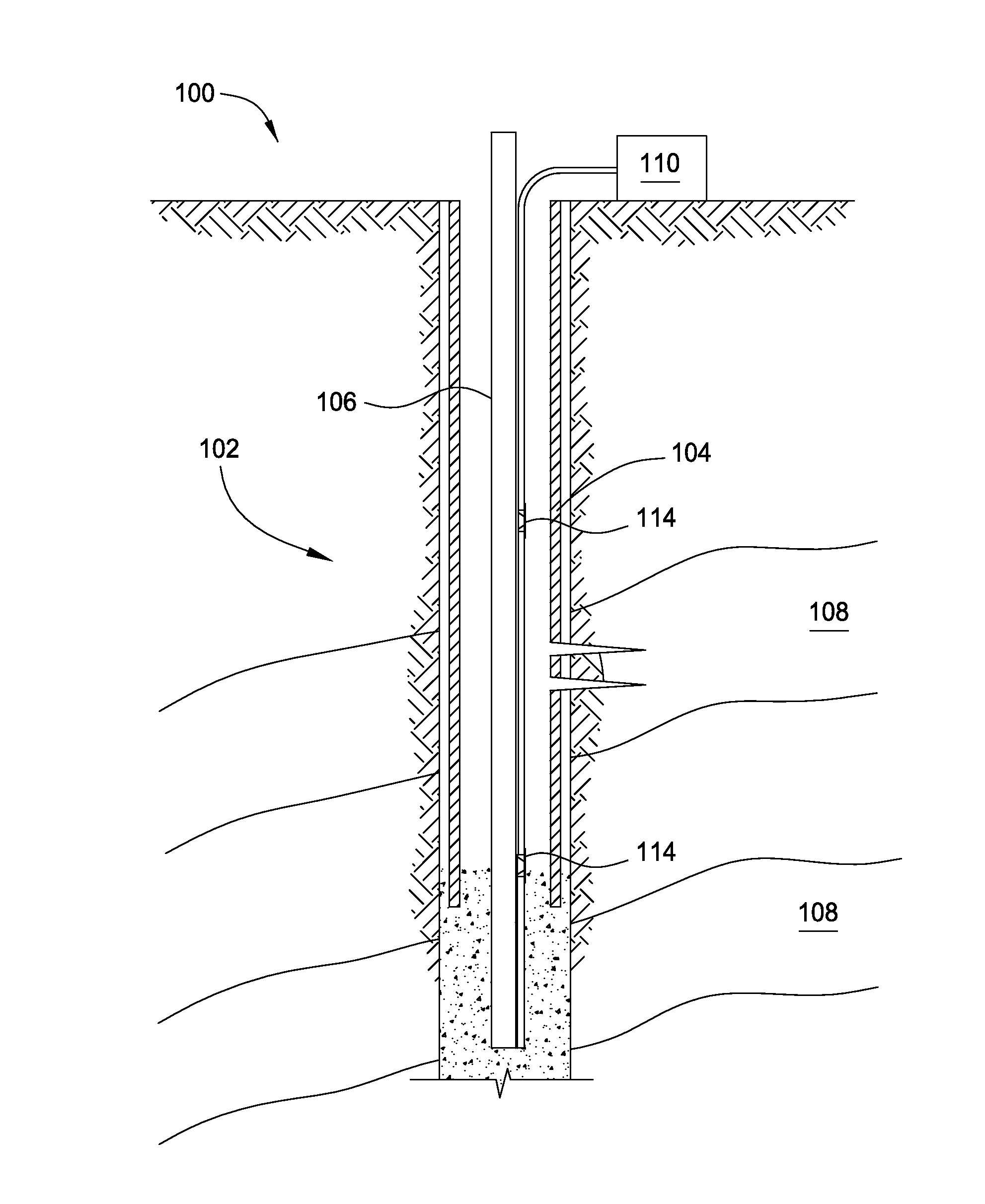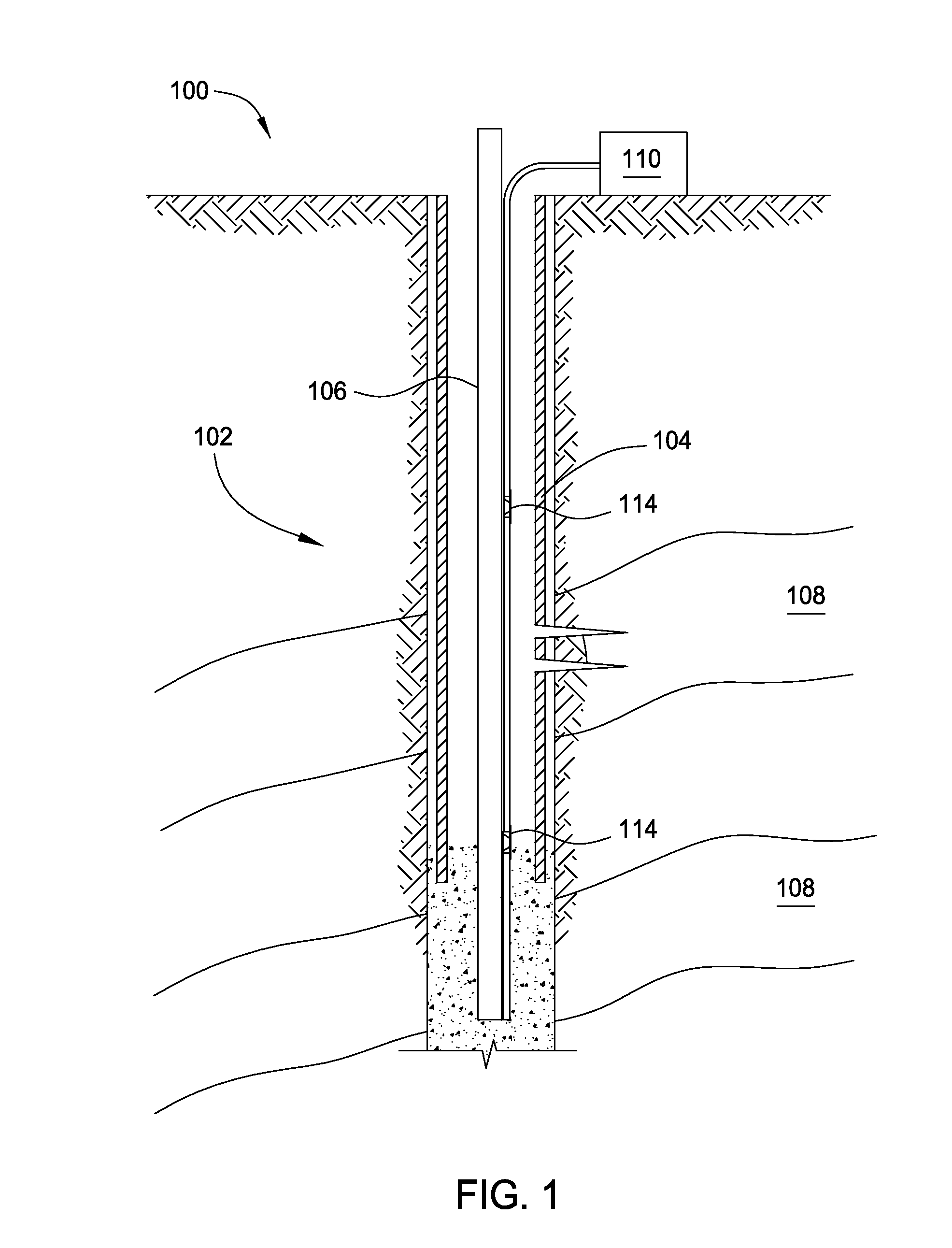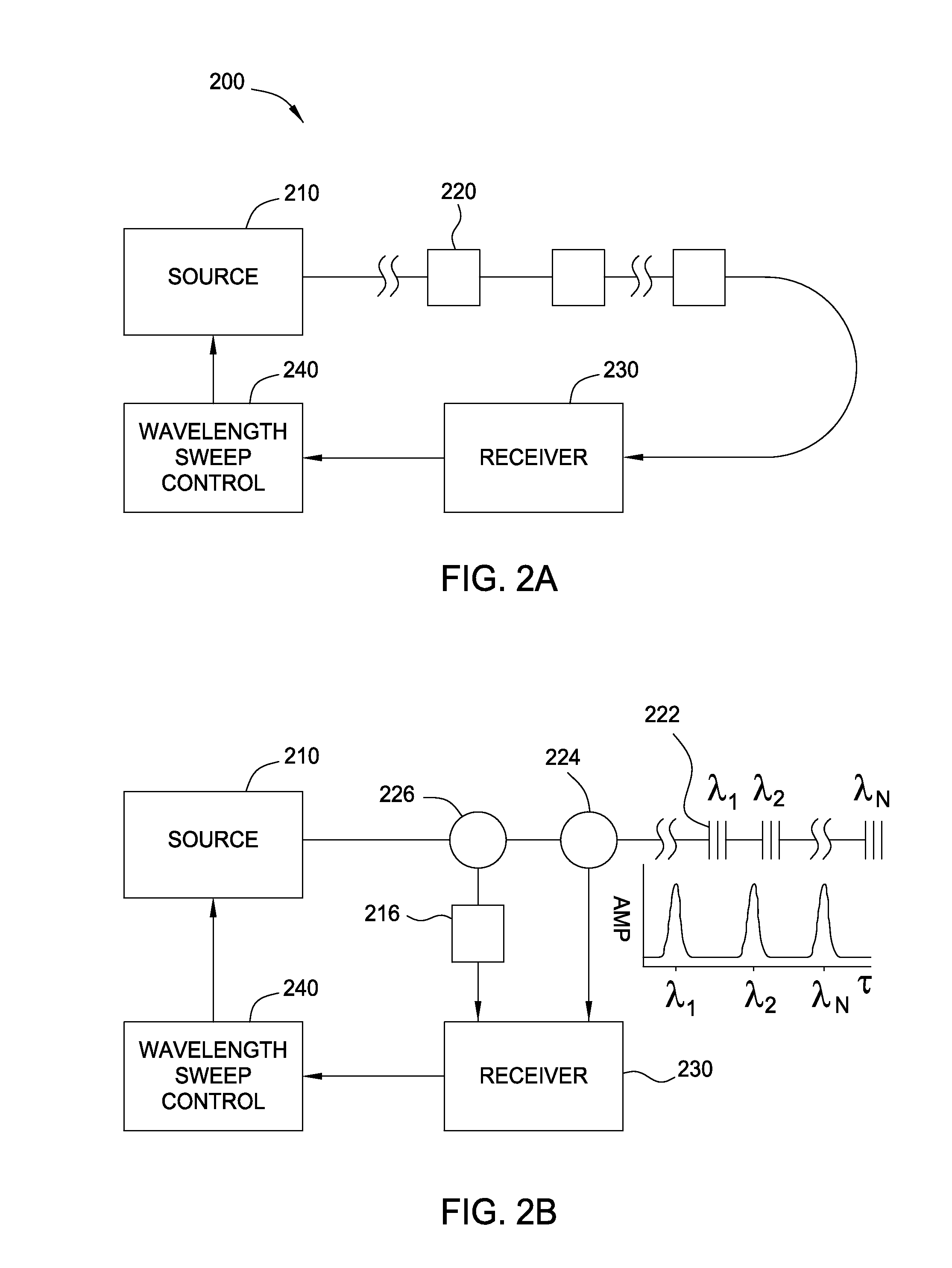Optical couplers used in a downhole splitter assembly
a splitter and optical coupler technology, applied in the field of downhole sensing, can solve the problems of increased water production and gas conduction, increased lifting costs, and expensive treatment of produced water
- Summary
- Abstract
- Description
- Claims
- Application Information
AI Technical Summary
Benefits of technology
Problems solved by technology
Method used
Image
Examples
Embodiment Construction
[0023]Multi-point optical sensors and distributed optical sensors have been developed and installed in wells to measure various downhole parameters. A transducer may be used to sense such downhole parameters as pressure and temperature (e.g., P / T gauge). Conventionally, multiple optical single-ended transducers (OSETs) cannot be measured using a single optical fiber deployed down a well. Instead, optical pass-through transducers are used such that light entering one end of a particular transducer is available at the other end of this transducer for the next transducer coupled thereto. In this manner, multiple optical pass-through transducers can be measured using a single optical fiber reaching the surface. However, if one of the optical pass-through transducers is damaged such that light will no longer travel through, then light will not reach transducers located further downhole, limiting the sensing information available.
[0024]Accordingly, what is needed are techniques and appara...
PUM
 Login to View More
Login to View More Abstract
Description
Claims
Application Information
 Login to View More
Login to View More - R&D
- Intellectual Property
- Life Sciences
- Materials
- Tech Scout
- Unparalleled Data Quality
- Higher Quality Content
- 60% Fewer Hallucinations
Browse by: Latest US Patents, China's latest patents, Technical Efficacy Thesaurus, Application Domain, Technology Topic, Popular Technical Reports.
© 2025 PatSnap. All rights reserved.Legal|Privacy policy|Modern Slavery Act Transparency Statement|Sitemap|About US| Contact US: help@patsnap.com



